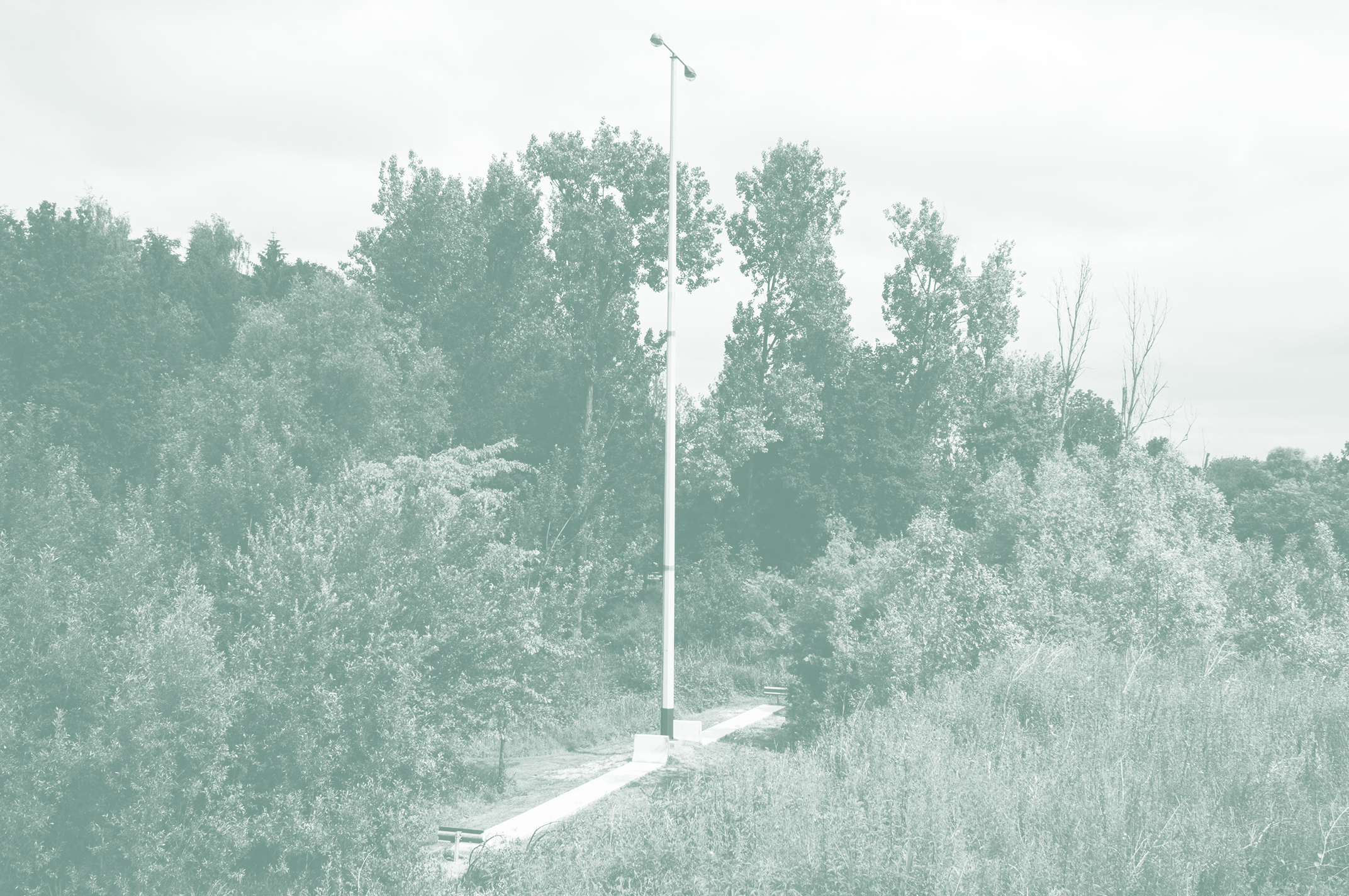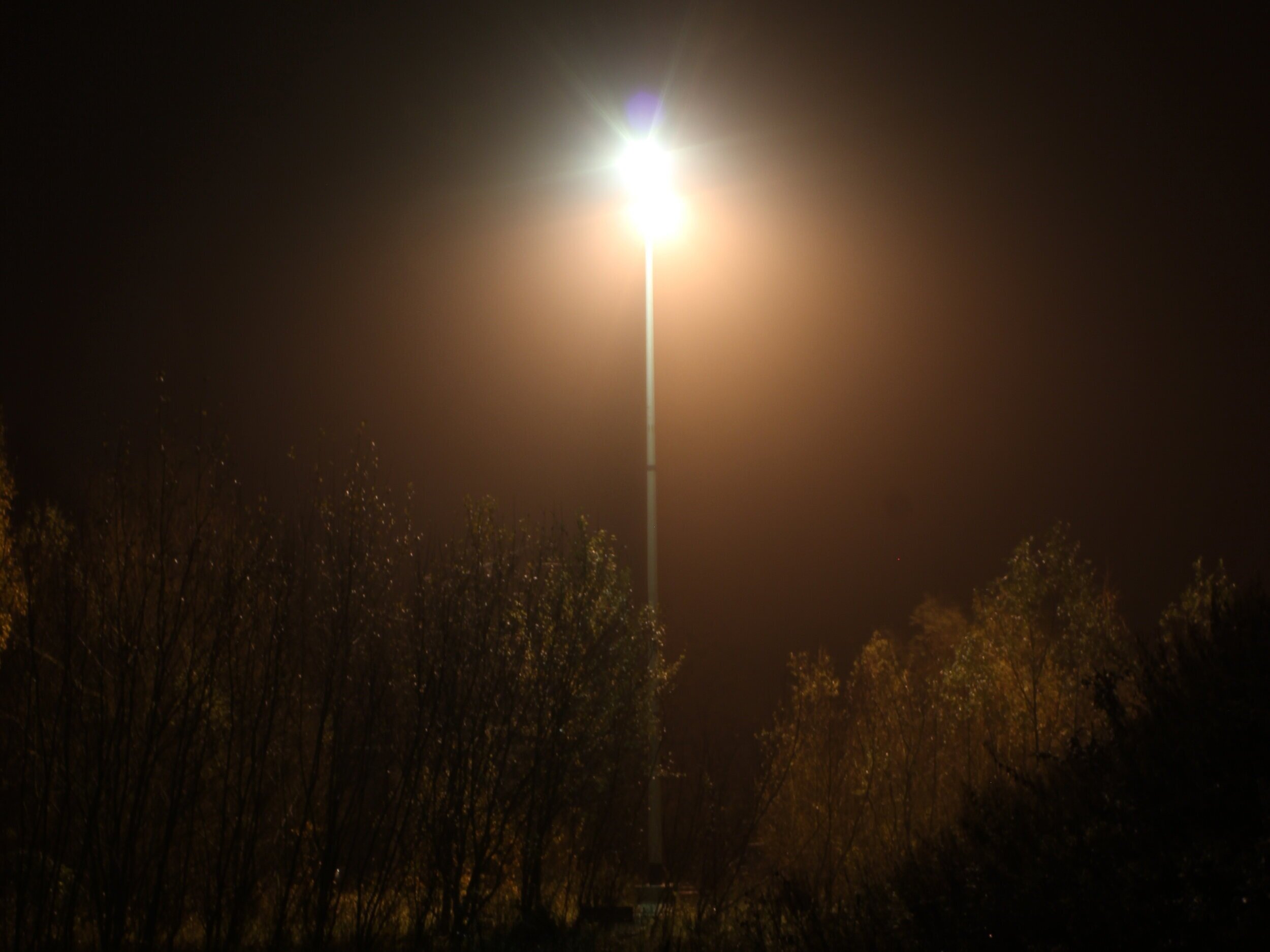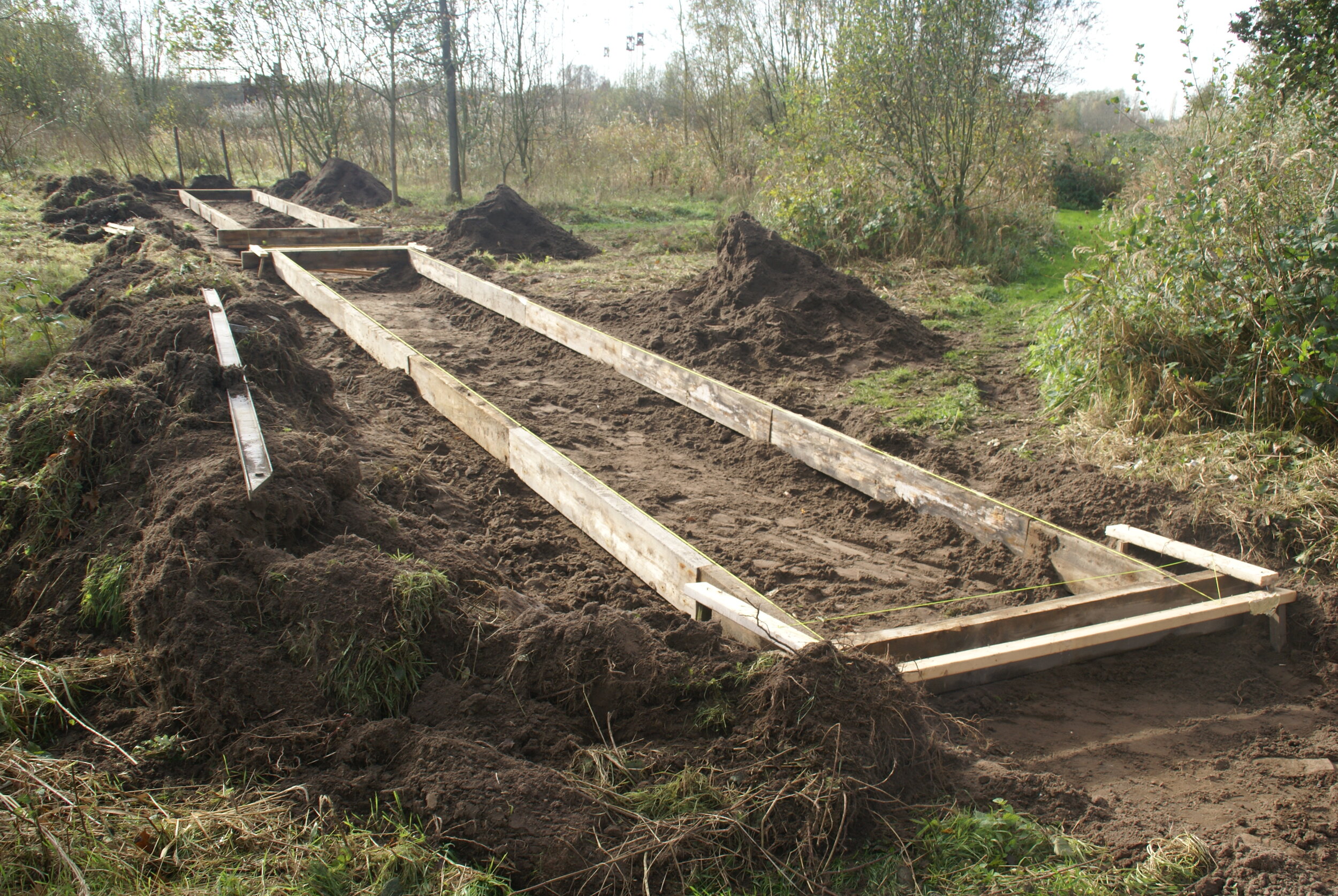
Concrete Evidence: 1m (Kemzeke)
2013
Concrete, lamppost, crash barriers, road markings (3150 x 100 x 2200 cm)
Permanent installation at the Verbeke Foundation
In collaboration with Agentschap Wegen en Verkeer and Fero NV. Opened during PARK + RIDE, group exhibition, Verbeke Foundation, Kemzeke (BE)
‘Highways are the cathedrals of our time’, someone said, not me. - David Byrne
The construction of highways, since their conception in the beginning of the 20th century, has always been problematic in the manner in which it treats the landscape. Its large scale application in the fifties and sixties have completely changed our idea of transportation and use of terrain.
Highways do not follow the general rules of building, in that that they are not organised into lots, parcels or sites like regular construction sites, but rather as a current or a flow straight through the latter. They are connections that are deemed necessary for our modern civilisation. Although the fast expansion of the global highway network has slackened since the eighties and nineties, they still remain a symbol of progress and prosperity. That is, the prosperity of a society or country and not of a community per se.
The construction process is one that deals with absolutes. The absolute need to connect one city to another, the sheer demand of joining industrial to commercial zones, etc. Whatever the cost for the greater good. This generalisation made highways into something untouchable, something that has to be built and that no one can stop.
Highways are an expression of freedom that our modern society tries to imply. A place where everyone can drive at high speed, regardless of the landscape. It gives the ability to traverse cities, villages, fields, forest and rivers, with only the destination as an important factor. The ability to travel, to be between objectives without every becoming an objective itself. It offers a world free of obstacles.
he intention of this project is to take these global and general characteristics of the highway, and to place it into a personal context. The construction of only one meter completely puts it into redundancy, taking away its envisioned functions but leaving its symbolic nature. The idea of one person being capable one building a personal highway, functional or not, is the exact opposite of its generalising aspect. The fact that it is only one meter makes it entirely useless, but a highway nevertheless.
What remains is a monument or sculpture, in spite of its frame of reference, which can be approached, touched, walked upon, used for any kind of activity, embodying the personal capability of being part of the global system of construction.







